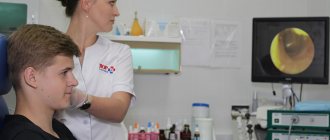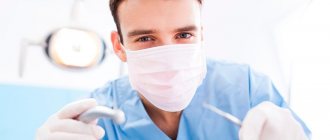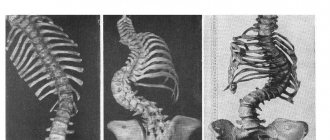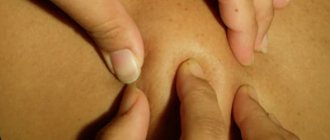PMS symptoms, known as premenstrual syndrome, begin 5-14 days before your period begins. Here are 10 main signs that a woman experiences during this period. You can deal with most of them at home. But if the manifestations are too active and affect your life and interfere with you, be sure to discuss this with your gynecologist.
PMS symptoms
Treating PMS Symptoms
More than 90 percent of women experience PMS symptoms to some degree. They usually go away in the first two days after the start of menstruation. We publish the 10 most common signs that your period is approaching.
What is PMS
Premenstrual syndrome - PMS - occurs 2-10 days before menstruation. This is the same state when a woman can cry without a good reason, want “I don’t know what,” get irritated over little things, experience headaches and muscle pain, and generally feel worse than ever.
According to statistics, about 90% of women have experienced PMS in one form or another at least once in their lives.
Severe PMS is called premenstrual dysphoric disorder - PMDD. The symptoms are the same, but much more intense. So much so that a woman cannot lead her usual lifestyle.
Fortunately, PMDD is less common. Only 3–8% of women complain of Premenstrual Dysphoric Disorder (PMDD).
Syndromes
Premenstrual syndrome (PMS) is a complex of interrelated symptoms characteristic of the premenstrual period. These symptoms can manifest themselves in both the psychoemotional and physiological spheres.
The difficulty in describing and diagnosing PMS lies in the fact that, as a rule, every woman experiences certain changes in well-being before menstruation. And assessing the severity and degree of these manifestations largely has to be subjective. Sometimes you have to come across the opinion that PMS - due to its widespread prevalence, cyclicality and variety of manifestations - is not a pathology and, therefore, does not require serious attention either from the woman herself or from her doctor. This is a deep misconception. Think about it: the first signs of PMS appear on average at the age of 25 and then they only get worse, smoothly flowing into menopausal syndrome already at the age of 45-50 years. That is, the most active years of a woman’s life pass “under the sign of PMS,” significantly reducing the quality of life and bringing her both physical and moral suffering. Modern gynecology clearly states that premenstrual syndrome is a good reason to consult a doctor and receive a set of therapeutic prescriptions.
We can talk about four forms of PMS.
- Neuropsychiatric. Characterized by vivid manifestations in the psycho-emotional sphere. The woman becomes irritable, experiences unreasonable anxiety and excitement, and finds it difficult to control her emotions. She becomes insecure, and the “offense threshold” also rises - a woman may react inadequately to completely neutral statements addressed to her, and show causeless aggression. A very common manifestation of the neuropsychic form of PMS is a depressive state.
- Edema. It is characterized by swelling (of the arms, legs, face), mastalgia (painful sensations in the mammary glands), abdominal pain, and a feeling of bloating. During the period before menstruation, weight increases, and familiar and favorite clothes become uncomfortable.
- Cephalgic - with severe headaches.
- Krizovaya. Manifests itself in the form of attacks of unmotivated panic and fear; accompanied by a sharp release of adrenaline into the blood.
The most difficult symptoms to bear, both for the woman herself and for the people around her, are those related to the psycho-emotional sphere. From the outside, a woman’s behavior may seem inadequate and emotionally unstable. Of course, this entails complications in relationships, especially with those people to whom it is impossible to explain the true reason for such changes in behavior.
In some cases, other symptoms may be observed, in particular:
- slight increase in body temperature;
- ophthalmoplegic migraine is a headache associated with various disorders in the eye area. This may be a violation of the movement of the eyelids, strabismus, dilated pupils, blurred vision;
- cyclic iridocyclitis – inflammation of the iris;
- hypersomnia – increased sleepiness;
- allergy;
- gingivitis (gum inflammation), stomatitis;
- cyclic bronchial asthma;
- cyclic vomiting.
Obviously, such severe manifestations of PMS are a serious burden on the body and require adjustment. In addition, it has been proven that women suffering from PMS have a much more difficult time during menopause. Therefore, you should not be shy and try to cope with this problem yourself. Be sure to consult a doctor.
How does premenstrual syndrome manifest?
The female body is not a static substance. Naturally, during his life he undergoes various changes, and his reactions to various events and phenomena also change.
In relation to PMS, we can say that its first signs are observed at the age of 20-25 years. As a rule, the syndrome is mild, and a young and healthy body can easily tolerate it. Therefore, women see no reason to see a doctor.
However, PMS tends to intensify and become more pronounced over time. And at the time of going to the doctor (the most common age for this is 30-35 years), premenstrual manifestations are already causing the woman some anxiety, they become clearly expressed and are quite difficult to tolerate. Moreover, the forms of PMS change with age. It has been proven that at the age of 27-28 years the neuropsychic form is more often observed, at 30-31 years - the edematous form, at 33-34 years - the cephalgic form.
It is safe to say that each woman experiences “her own individual” PMS, which to one degree or another includes changes in general well-being, emotional disturbances and somatic symptoms (physical sensations). When formulating complaints, the average woman identifies 3 symptoms that cause her the greatest inconvenience and anxiety. During the conversation with the doctor, 4 more symptoms are revealed. If you try to rank all the symptoms according to the frequency of complaints about them, you will get the following picture.
- Rapid and severe fatigue, a feeling of constant tiredness, which often occurs in the morning and gradually increases in the evening.
- Difficulty concentrating, absent-mindedness, memory loss. If a woman’s work involves such actions as calculations, calculations, comparative analysis and decision-making, then during the premenstrual period she may experience serious difficulties in carrying out her professional activities.
- Depression. Depressed mood, disappointment in life, heightened perception of even the slightest difficulties and problems are very often premenstrual syndromes. This condition is very accurately described by the phrase “Nothing in life makes you happy.” This is explained by the fact that the level of the neurotransmitter hormones serotonin and dopamine in the blood decreases.
- Changing the diet due to the needs of the body. Many women note that in the days leading up to menstruation, their appetite increases and their taste preferences change. The need for salt and sugar changes quite often.
- Painful sensations in the chest, increased sensitivity, engorgement in the nipple area, mastalgia. Numerous studies have shown that the stronger the pain, the shorter its duration. However, this symptom must be treated very carefully. The fact is that it feels similar to the initial manifestations of mastopathy. And because of the familiarity of the sensations, a woman may postpone a preventive visit to the gynecologist in order to check the condition of the mammary glands. We remind you that such a visit should be carried out once a year, and it is also advisable to conduct an independent breast examination once a month. It is advisable to do this on the same day of the menstrual cycle.
- Edema. Swelling during PMS can be expressed in different ways. For some, it manifests itself as fluid retention in the arms, legs, abdomen, and waist. The oval of the face also changes. There are also local manifestations - only in the abdomen, upper or lower extremities.
Treatment of premenstrual syndrome
The first group of measures that can be distinguished consists of drug-free methods of PMS correction. They are primarily aimed at adjusting the regime and lifestyle. It may be enough for a woman to pay more attention to her diet, set aside time for proper sleep and moderate physical activity - and the manifestation of PMS symptoms will significantly decrease or disappear altogether.
Of course, the emotional background and the overall load on the body are very important - and these two factors are directly related to the situation in the family and at work. It is not always possible to completely correct them, but, nevertheless, it is necessary to try to eliminate overload, mental fatigue, and try to avoid stressful situations. Rest in the evening and a peaceful bedtime are very important. Sleep duration should be 7-8 hours.
When choosing a type of exercise, it is recommended to pay attention to swimming, walking, light jogging and cycling. During exercise, the brain produces endorphins - compounds that have the ability to reduce pain and improve mood. It is only important to correctly determine the intensity of the load and not get carried away with increasing it. Otherwise, exercise will lead to severe fatigue and can only worsen PMS.
As for nutrition, the following recommendations can be given. In general, it is advisable to adhere to a carbohydrate diet; the percentage of carbohydrates in the diet should be at least 70%. It is better if it is complex carbohydrates: cereals, vegetables, legumes. Pay attention to green vegetables, they have an extremely beneficial effect on the body. Broccoli, for example, reduces chest pain, spinach and zucchini help cope with depression, and avocados and green peppers can influence causeless mood swings. By the way, doctors from the University of Texas say that green vegetables and fruits contain the largest amount of vitamins, and including these foods in your daily diet helps maintain health for many years.
The protein portion of the diet consists of nuts and lean meats.
It is very important to monitor the water-salt balance. The amount of salt should be reduced so as not to provoke swelling; it is also necessary to exclude canned food, smoked foods, seasonings with monosodium glutamate, and chips from the menu. For drinks, freshly squeezed juices, still water, and green tea are preferable. But it is better to refrain from drinking coffee - caffeine can only aggravate emotional instability and sensitivity of the mammary glands. The total volume of fluid consumed per day should be about 1.5-2 liters.
Treatment with medications can be divided into two large groups: non-hormonal therapy and hormonal therapy.
Non-hormonal drugs primarily include vitamins and minerals. For severe pain in the chest area, vitamin E helps well, and B vitamins help cope with mood swings and depression. Very often, magnesium orotate and calcium carbonate are recommended for PMS, which prevent swelling. Calcium carbonate also helps regulate the psycho-emotional state.
In addition to vitamins and minerals, for manifestations of premenstrual syndrome, a woman may be prescribed various diuretics, selective serotonin reuptake inhibitors and dopamine agonists. Do not be afraid of these complex names - in fact, the essence and principle of action of all drugs is quite easy to understand.
Diuretics are diuretics. They remove fluids from tissues and increase the amount of urine produced. Their use is justified if a woman’s PMS is accompanied by severe swelling. Recommended diuretics, in particular veroshpiron, act in a complex manner, promoting the removal of not only excess fluid, but also sodium salts. They are also potassium-sparing drugs and regulate the acid-base balance of the blood.
Selective serotonin reuptake inhibitors (SSRIs) help cope with unmotivated worries, anxiety, and depression. These drugs, which belong to the latest generation of antidepressants, act very gently and are well tolerated. When taken correctly, they do not cause addiction or sedative effects, and gradually level out the emotional background. The most common medications are fluoxetine (Prozac), sertraline (Zoloft), and citalopram (Cipramil). They are taken in two-week intermittent courses, starting 14 days before the date of expected menstruation. Please note: all SSRI drugs should only be used as prescribed by a doctor.
Dopamine agonists are medications that reduce prolactin levels in the blood. They cope well with symptoms of PMS such as mastalgia and swelling. The most commonly prescribed drug is bromocriptine.
Hormone therapy
Very often, combined oral contraceptives (COCs) are used to treat premenstrual syndrome. The logic here is very simple: COCs suppress ovulation, and with it the symptoms of PMS. However, recent research in this area shows that this is not the case. Yes, many women noted that while taking oral contraceptives, their symptoms of PMS decreased. But at the same time, the percentage of those women in whom the severity of PMS symptoms not only did not decrease, but also increased, turned out to be quite high. This can be explained by the fact that COCs contain gestagens, which cause side effects with symptoms similar to PMS.
If we talk about other hormonal drugs that are not contraceptives, then for PMS, utrozhestan, duphaston, danazol, zoladex, buserelin can also be prescribed. Each drug has pronounced side effects and contraindications.
To summarize, we can unequivocally state that premenstrual syndrome is a chronic disease that affects a woman’s mental and physical health, definitely reducing her quality of life. To treat PMS, complex therapy should be used, which combines medications, correction of work and rest schedules, moderate physical activity, and a balanced diet with a number of restrictions. The experience that has been accumulated in the study of this syndrome allows us to say with confidence that each woman can choose her own individual treatment schedule. It is individual, because PMS manifests itself differently in every woman. Remember this and do not self-medicate.
Where does PMS come from?
Despite the widespread prevalence of PMS, doctors cannot accurately determine its causes. However, there are still some assumptions about Premenstrual syndrome (PMS):
- Cyclic hormonal changes . Fluctuations in estrogen and progesterone levels along with PMS symptoms disappear during pregnancy and postmenopause.
- Chemical processes in the brain . The amount of neurotransmitters, including serotonin, dopamine and GABA, affects the emotional and mental state. Thus, a lack of serotonin can worsen mood, cause fatigue, hunger and sleep problems.
Causes
The exact cause of PMS has not been established. There is a correlation of the syndrome with a lack of body weight, high intellectual and psycho-emotional stress in patients. More often, premenstrual syndrome is observed in women who have suffered hormonal fluctuations (abortion, childbirth) with pathology of the heart and blood vessels, digestive organs or central nervous system.
There are several hypotheses about the origin of PMS:
- Hormonal. It is believed that the syndrome can be triggered by improper conversion of progesterone (to pregnenolone, an antagonist of A- and B-GABA receptors). The influence of corticosteroids and male hormones (androstenedione and testosterone) on the course of PMS is considered.
- Hypersensitivity hypothesis. Based on an allergic reaction to estrogens in the LH phase of the ovarian cycle.
- "Water intoxication." It is suggested that there is a connection between changes in the regulation of the renin-angiotensin-aldosterone system (RAAS; with increased ACTH secretion) and tissue fluid retention in women with PMS.
- Neurotransmitter imbalance of the pituitary-hypothalamic system. The modern concept considers an increase in melanostimulating hormone (MSH). By binding to endorphins and sex steroids, it can provoke high concentrations of vasopressin, prolactin, emotional lability and increased appetite.
Who is at risk
If you have your period, it means you may have PMS. But the biggest risk is What Is PMS? women 20–40 years old who:
- gave birth;
- are depressed (and may not know it);
- have suffered from depression, including postpartum depression, or suffer from bipolar disorder;
- have relatives with depression;
- are subject to frequent stress;
- smoke;
- abuse alcohol, salt, sugar and red meat;
- sleep little;
- neglect physical activity.
Risk factors
According to scientific research, women who fall under the following factors are most susceptible to the effects of the syndrome:
- European women primarily suffer from premenstrual syndrome.
- Girls living in big cities.
- Women engaged in mental work are most often affected by the syndrome.
- Frequent stressful situations accompanied by depression.
- Frequent pregnancies or their absence.
- Presence of pelvic organ infections.
- Failure to follow healthy eating rules.
- Physical inactivity.
What are the symptoms of PMS?
There are quite a few symptoms of PMS, but most often women experience Premenstrual syndrome (PMS).
Emotional and behavioral manifestations
- depression, tension and increased anxiety;
- tearfulness;
- mood changes;
- irritability, attacks of anger;
- changes in eating behavior: constant hunger or loss of appetite;
- insomnia;
- self-isolation, reluctance to communicate with people;
- difficulty concentrating;
- libido changes.
Physical manifestations
- muscle pain;
- headache;
- fatigue;
- weight gain due to fluid retention in the body;
- bloating;
- breast pain or tenderness;
- acne;
- constipation or diarrhea;
- alcohol intolerance.
For most women, symptoms of any severity usually resolve within four days of the start of their period.
Diagnostics
The main diagnostic criterion for PMS is the cyclical nature of its manifestation. Laboratory studies of hormones in the blood make it possible to establish the form of the disease and determine which medicine or combination of medicines is needed for therapy.
The edematous form is characterized by a decrease in progesterone levels in the second phase of the cycle. Cephalgic, neuropsychic and crisis forms are accompanied by an increase in prolactin levels. With these forms, it is important to conduct electroencephalography for a more accurate diagnosis of the condition.
For severe headaches, dizziness and fainting, an MRI or CT scan of the brain is prescribed. In case of edematous form, it is recommended to conduct tests to study the excretory function of the kidneys (Zimnitsky test, Rehberg test). In cases of painful engorgement of the mammary glands, a mammological examination and breast ultrasound are required.
How to tell if you have PMS
Diagnosing PMS is difficult. Physical and mental illnesses can have similar symptoms or simply make things worse before your period. Therefore, the most effective way of diagnosis is keeping a diary. How is PMS (premenstrual syndrome) diagnosed? .
If symptoms regularly appear in the middle of the cycle and persist until the start of menstruation, it is most likely PMS.
Note the following every day:
- Are there any pains or cramps?
- Is there any vaginal discharge?
- What's your mood?
- How long did you sleep?
- Do you feel tired or energized?
- How much do you weigh?
- Are there any external changes (bloating, acne)?
- Was there any physical activity?
- Was there sex? Protected or not?
- Are you taking contraceptives?
- When did your period start and end?
The most convenient way to do this is in special applications. Your smartphone is always with you, so you can make a note at any time.
Stages
According to the dynamics of its course, premenstrual syndrome is divided into the following stages:
- Compensated
. Signs of PMS appear in the LH phase of the cycle and disappear with the onset of KD without progression of symptoms over time. - Subcompensated
. Manifestations of PMS disappear 1-3 days after the onset of CD and worsen over the years. - Decompensated
. Symptoms persist throughout the CD, sometimes remaining after completion; their obvious strengthening over time and a reduction in “light gaps” are noted.
How to relieve PMS symptoms yourself
- Eat smaller, more frequent Premenstrual syndrome (PMS) meals to prevent bloating.
- Salt food less so that moisture is not retained in the body.
- Give up coffee, alcohol and cigarettes.
- Eat foods rich in calcium: cottage cheese, milk, hazelnuts, sesame seeds. As well as complex carbohydrates: fruits, vegetables and whole grains.
- Do yoga, learn deep breathing techniques, book a massage to relieve stress.
- Spend at least 30 minutes a day briskly walking, cycling, swimming and other aerobic exercise.
- Get more sleep.
When to see a doctor
It happens that PMS becomes a serious problem that interferes with leading a normal lifestyle. If your symptoms are severe and intense for two cycles in a row, you are most likely dealing with Premenstrual Dysphoric Disorder (PMDD). Then you should consult a doctor - a gynecologist and/or a psychotherapist.
There is no need to hesitate. Especially if you have a difficult emotional state: you want to harm yourself, you are thinking about suicide.
The presence of similar symptoms throughout the menstrual cycle is also a serious reason to make an appointment with a specialist. They may indicate other health problems not related to PMS and PMDD. For example, about thyroid diseases or depression.
Everything is in a fog
Many women feel their period approaching in advance because they have a headache during PMS. Migraines often accompany the second half of the menstrual cycle in girls of the asthenic type, with low blood pressure and poor blood circulation. Premenstrual syndrome, the symptoms of which are vegetative-vascular and neurological, is called cephalgic; it can also occur in women after a traumatic brain injury, so it must be treated with particular care. Its typical signs:
- Migraines with or without aura, migraine-like headaches, throbbing, sometimes accompanied by nausea and vomiting;
- Decreased blood pressure (especially dangerous in hypotensive patients), dizziness;
- Increased sensory sensitivity - all sounds seem loud, smells are pungent, light hurts the eyes;
- Problems with peripheral circulation - constant feeling of cold, numbness of fingers and toes.
What will the doctor do?
To diagnose PMS or PMDD, a doctor must rule out the possibility of pregnancy or health problems. So be prepared to get tested and answer Premenstrual Syndrome (PMS) questions about the timing of symptoms and their severity, ways you know to feel better, your mood, and much more. A menstrual diary will help you here.
If PMS is diagnosed and causes you severe discomfort, your doctor will most likely prescribe the following medications for Premenstrual Syndrome (PMS):
- Diuretics . They are taken if exercise and limiting salt intake do not help cope with weight gain, swelling and bloating. Diuretic tablets remove excess fluid through the kidneys.
- Non-steroidal anti-inflammatory drugs . For example, ibuprofen or naproxen. As a rule, they are prescribed for cramps, headaches and discomfort in the pelvic and chest areas.
- Antidepressants . They increase the level of neurotransmitters produced by the brain, which are necessary to control mood and emotions. The most effective group is selective serotonin reuptake inhibitors.
- Hormonal contraceptives . These medications stop ovulation and may relieve PMS symptoms.
Ask your doctor about all possible types of therapy. For example, some women experience Premenstrual syndrome (PMS) relief after acupuncture and herbal treatments (St. John's wort, ginger, ginkgo, chasteberry). What Is PMS helps some? folic acid, magnesium, calcium, vitamins D, E and B6. However, the effectiveness of these methods has not been proven.
And yes, always consult your doctor before taking any medications.
Treatment of “female ailment”
Before starting therapy, it is necessary to diagnose PMS, which occurs by contacting a gynecologist. The main test for confirmation is a blood test, which shows the level of hormones and their deviations from the norm. If the patient has additional complaints, consultations with other doctors, ultrasound, MRI, etc. may be prescribed.
Treatment proceeds as follows:
- prescribing sedatives – in the presence of psycho-emotional disorders in the form of aggression, depression, irritability;
- anti-inflammatory drugs - if the patient complains of aching pain in the back and lower abdomen;
- decongestants - swelling and swelling of the extremities on the eve of menstruation;
- taking Parlodel - as a rule, prescribed for the crisis form of the syndrome, has a general normalizing effect;
- taking antiprostaglandin drugs - prescribed to women who experience PMS in the cephalgic form;
- antihistamines;
- drugs that improve blood circulation in the nervous system.










